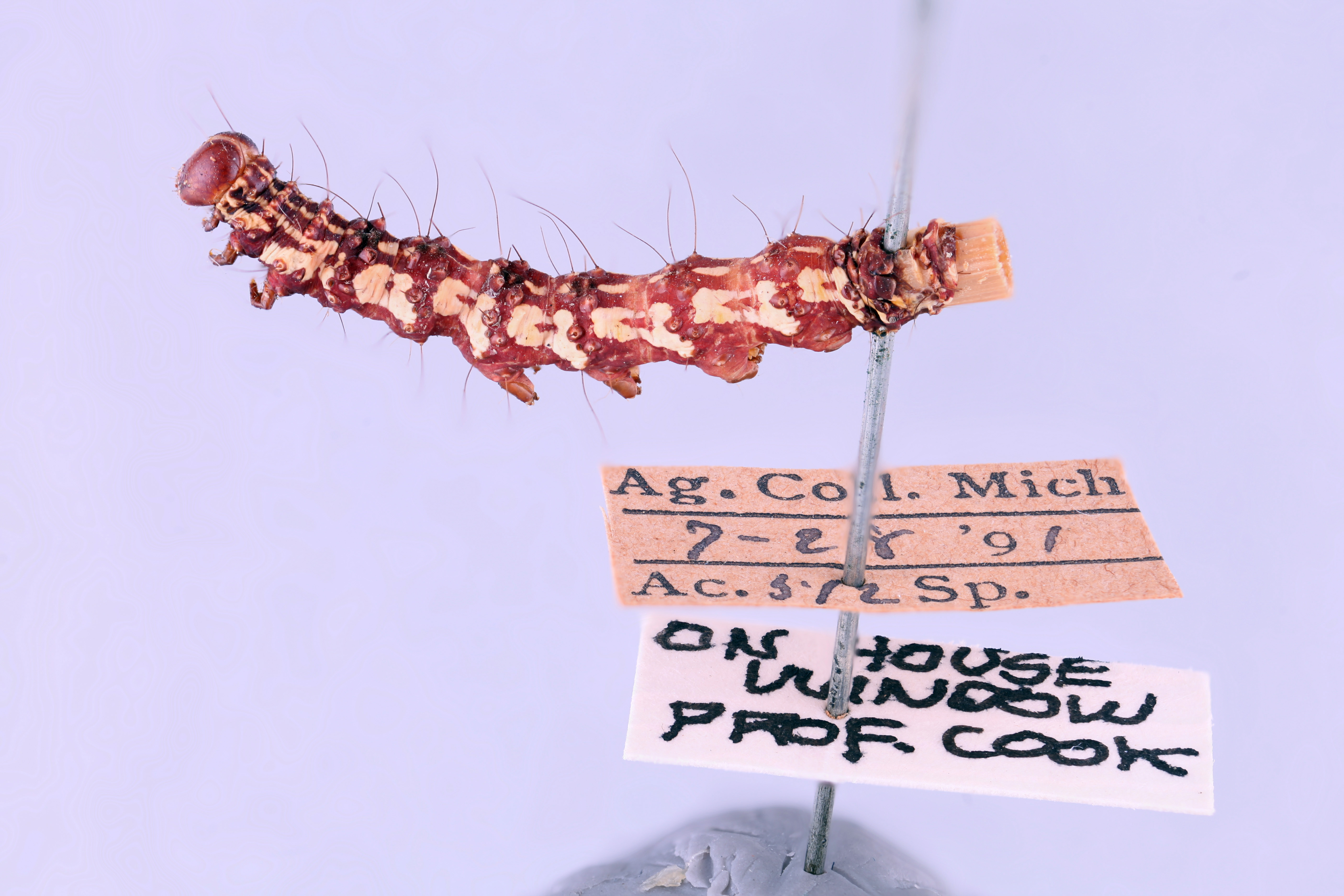Skewered caterpillars are examples of 19th century collection methods
Curators of MSU Entomology’s arthropod research collection have located fragile specimens preserved by the collection’s founder at the turn of the 19th century.

The A.J. Cook Arthropod Research Collection has long been part of the Department of Entomology and, in fact, it began as a collection meant for instruction in 1867 before the formation of the department.
Since then, more than 1.5 million specimens have been amassed, curated and cared for by a series of professors, managers and students. The specimens now serve as data to researchers and diagnosticians throughout the world for their taxonomic and ecological studies. Although many of the original specimens have been dispersed among hundreds of modern cabinets and drawers, a few cohesive collections of insects from the turn of the 19th century still exist.
As can happen in museums with large collections, manager Gary Parsons recently “discovered” two drawers of dried and pinned caterpillars dating between 1881 and 1916. These specimens were originally prepared by cutting a hole at the back end of the caterpillars, squeezing out the internal organs and then blowing up the empty exoskeletons with air pressure from a pipette bulb. The “blown” caterpillars were then cooked in a small oven made of a tin can and light bulb. The fragile, dried specimens were glued to bits of wheat straw through which the pin was placed.

This was the standard method at the time of preparing caterpillars for display with pinned adult specimens. Today, we mostly preserve caterpillars in alcohol, which minimizes damage and allows for easy study. Most of these old specimens were still readily identifiable to genus and species, and a few specimens represented species not in the main collection.
Learn more about the history of The A.J. Cook Arthropod Research Collection at our website.



 Print
Print Email
Email
